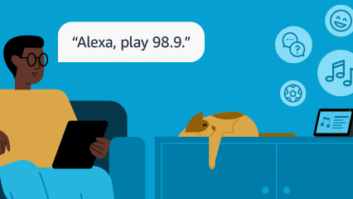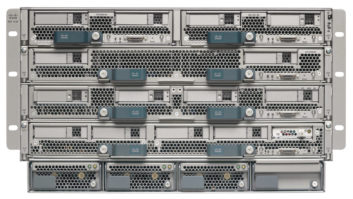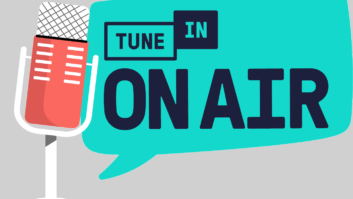Streaming costs and benefits
Jan 1, 2002 12:00 PM, By William Harrison
On-air personalities love it, younger audiences seem to demand it, and many stations are afraid not to provide it if their competitors are already online. To stream or not to stream, that is the question. Just a short while ago, that question did not exist. If the content was there, stations found a way to stream it. There was potential to reach a larger audience, and that was all that mattered.
Branded players reinforce the station’s identity and offer additional areas for revenue generation and listener services.

But as online listening increases and costs follow, the decision is no longer simple. Everywhere in the online streaming world, companies are still trying to figure out if streaming media is a viable business. Streaming is very different from the traditional broadcast model. The traditional model has a fixed cost for reaching listeners: transmitter, tower, and electrical usage costs stay the same whether there are 1,000 or 100,000 listeners. With online streaming, however, costs go up incrementally with each additional user. In these times of reduced budgets, it’s hard to deny that on a per-listener basis streaming is expensive, and the benefits are difficult to quantify.
Streaming costs boil down to a not-so-simple equation. Add the prices of the hardware, the streaming server software, any content licensing fees and the amount of bandwidth that will be used. There are hidden costs too, such as tech support for users who can’t receive the stream or answering e-mail about why one format was chosen over another and at the rate chosen. It adds up quickly.
The hardware piece is simple to estimate � nearly any generic server will do. Software costs are almost as easy, usually coming down to a choice between RealServer or Windows Media Server (although more and more companies are using Windows Media (WM) since the software is free). There are benefits and drawbacks to all the formats, such as the unavailability of a WM player for Linux systems, but in the end it comes down to what is best for each situation.
More fees
Content licensing will depend on what will be streamed. It seems everyone wants to get an additional fee if their material goes out over a wire as well as the air. (See E-casting on page 14.) ASCAP and BMI want fees for exposing an audience to their material over the Net. AFTRA wants fees if their talent voices the spots that are streamed. Even APWire wants a fee if on-air personalities read a story that goes out over more than just one air signal.
Bandwidth, however, is a different matter. In a nutshell, bandwidth is the number of people a station reaches simultaneously, multiplied by the quality of media they receive. For instance, if the desire is to reach 100 simultaneous people at 16kb/s (fairly run-of-the-mill), it will cost a certain amount. Reaching 200 people requires twice the cost for the same quality.
Ad insertion allows the streamed ad inventory to be sold separately from the terrestrial inventory.

Many times, bandwidth is limited by what is available. A single dedicated line from the facility will have a fixed monthly cost, but only a certain number of concurrent streams can be served. If it is not acceptable to limit the number of users, you could outsource to a company such as Akamai and enjoy unlimited bandwidth, but even that can be a bad thing. Case in point: many people went online for information after the September 11 tragedies, including the website for KQED, San Francisco. Many visitors were outside the KQED listening area. Consequently, KQED’s September bandwidth costs came in at $12,000; four times the normal cost. It’s difficult to plan a budget for surges like that.
Globalization can also be a benefit. The Web has removed geographic boundaries from our audience. Suddenly, a streamed spot is no longer just reaching a local audience. Marketing might be able to offer that as a benefit to any potential sponsors, underwriters, or advertisers.
There are alternate ways of getting into the streaming market. Free services, such as Live365 or Warp Radio, will stream audio for free (with a decent Internet connection and 24/7 connectivity, and a dedicated encoding machine), but the users are forced to view banner and pop-under ads, and some services will interrupt audio to play a streaming ad. They have to pay for it somehow. If, like so many other dot coms, their business model fails, a station may suddenly find itself off the Internet airways.
Supplemental revenue
There are other ways to offset the expense of streaming audio on the Web. A streaming underwriting announcement can be played before the user connects to the actual stream. Ad substitution can be used on the Web stream, to sell Web ads at a different cost. There could be a higher charge for an ad with a very targeted audience.
Conventional broadcasting suggests that listeners will go to a site when mentioned, but only online listening can guarantee it. With technologies such as SMIL, the user can be sent to each sponsor’s site when its particular spot is being streamed.
There are other streaming models in use, such as subscription and pay-for-play, where the user must pay before he can receive the stream or pay for a higher quality stream. There are also sites that force a user to complete an action before being allowed to listen, such as a taking a survey for a stream sponsor. Underwriting, sponsorship, and grants can help cover the costs of streaming, but odds are slim they will ever come close to covering the entire costs.
Tracking users online can be easier than tracking radio listeners. The station’s site can set a cookie on the user’s machine, and after five visits requesting audio, open a survey for the user to complete. The station gets survey results from a user who has already proven to be a repeat listener � no wasted time for a first-time user, or biased information returned in the questionnaire.
Perhaps the largest benefit of streaming is listener loyalty. Someone who listens in the car as they go to work may not be able to receive the signal once inside a heavily reinforced concrete and steel office building. Online listening reinforces brand recognition and loyalty.
Streaming can help to build online communities as well. Many users log on to get Web-only content, such as discussion boards. Streaming adds another feature that will help draw an audience to a station’s site, and make them feel special since they are receiving something that terrestrial listeners are not. Additional money can be made in other ways from this added traffic, if not directly from the stream itself.
Perhaps the best piece of advice I can give is to let listeners and users know that there is a significant cost involved with streaming media. Ask them to listen to a broadcast signal if they can, instead of resorting to the stream. They will get a better quality audio, and most likely have fewer problems with it.
Undoubtedly, there will be new business models, and people will find ways to make streaming more cost effective, but for now each station must carefully weigh the possible return from advertising or other existing business models. In the end, it comes down to a question of whether there is a strategy for the station that provides enough of a return on the investment (in loyalty, corporate image, or cash) to make signing that monthly check for bandwidth tolerable.
Harrison is manager of Web technology for WETA-FM and WETA-TV,Arlington, VA.












